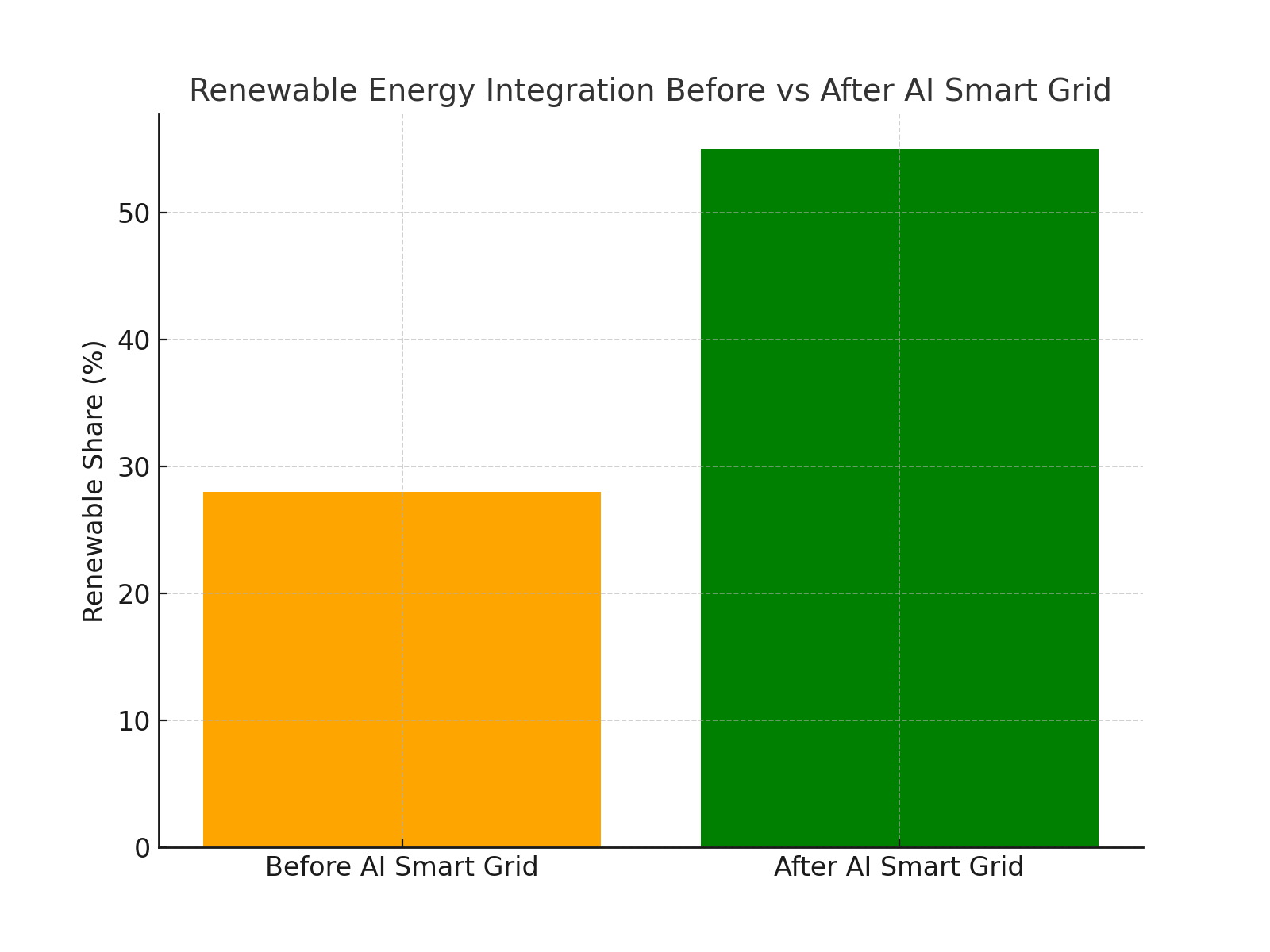Introduction
A revolution is reshaping the global energy landscape. Governments and corporations are aggressively pursuing renewable energy adoption to achieve carbon neutrality and comply with increasingly stringent environmental regulations. According to the International Energy Agency (IEA), renewable energy sources are expected to account for 50% of global electricity generation by 2035, up from 29% in 2020.
While this transition is critical for sustainability, it introduces significant challenges for grid operators. Traditional power grids, originally designed for predictable, centralized fossil-fuel-based generation, struggle with the intermittency of solar and wind energy. Without advanced forecasting and real-time operational capabilities, grids face voltage fluctuations, supply-demand mismatches, and potential blackouts.
Our client, a mid-sized European utility provider serving over 8 million customers, sought a future-ready smart grid solution. The goal was to integrate renewables efficiently, stabilize supply, reduce operational costs, and enhance customer satisfaction, all while maintaining compliance with EU carbon reduction mandates.
Challenges
-
Intermittent Renewable Generation:
Solar and wind outputs fluctuated hourly, causing grid instability. Peak demand periods occasionally coincided with low renewable output, forcing reliance on fossil-fuel backup plants. -
High Operational Costs:
The utility spent 30% more annually on backup generation, including fuel, staffing, and maintenance, to compensate for the unpredictability of renewable sources. -
Aging Infrastructure:
The transmission and distribution network lacked real-time monitoring and predictive capabilities, limiting the ability to respond to outages quickly. -
Regulatory Pressures:
EU mandates required a 40% reduction in CO₂ emissions within five years, compelling the utility to accelerate renewable adoption while maintaining reliability. -
Limited Demand Forecasting:
Traditional forecasting methods, based on historical consumption trends, failed to account for the increasing influence of electric vehicles (EVs), smart homes, and distributed energy resources.
Without a robust solution, the client risked escalating costs, regulatory penalties, and customer dissatisfaction.
Solution: AI-Powered Smart Grid Transformation
The consulting team implemented a multi-layered smart grid solution leveraging AI, IoT, and digital twin technology.
Phase 1: Digital Twin of the Grid
-
A virtual model of the entire grid was developed, simulating energy flows from generation to distribution.
-
The digital twin allowed the utility to anticipate voltage fluctuations, optimize load balancing, and evaluate the impact of integrating new renewable sources before physical deployment.
Phase 2: AI-Based Demand Forecasting
-
Machine learning algorithms were trained using historical consumption data, weather forecasts, and EV charging patterns.
-
Predictive models achieved 95% accuracy in forecasting hourly demand, enabling proactive adjustments to generation schedules.
Phase 3: IoT Sensor Deployment
-
Smart sensors were installed across transmission lines, substations, and key distribution points.
-
Real-time monitoring of voltage, current, and frequency enabled rapid detection of anomalies such as energy theft, equipment failure, or line overloads.
Phase 4: Energy Storage Integration
-
Large-scale battery storage systems were deployed at strategic nodes.
-
Stored excess renewable energy during low-demand periods and released it during peak hours, smoothing supply fluctuations.
Phase 5: Predictive Maintenance and Automation
-
AI models analyzed equipment performance data, predicting failures before they occurred.
-
Automated alerts and scheduling minimized downtime and optimized maintenance resources.
Results Achieved
After 18 months of implementation, the transformation delivered substantial benefits:

-
40% Reduction in Unplanned Outages: Early detection of potential faults and better load balancing reduced blackout occurrences.
-
Renewable Energy Integration Improved from 28% to 55%: The utility successfully accommodated higher renewable penetration without grid instability.
-
Operational Cost Savings of $120 Million Annually: Reduced reliance on fossil-fuel backup and optimized grid operations lowered expenditure significantly.
-
Regulatory Compliance Accelerated by 3 Years: Achieved CO₂ reduction targets faster than mandated.
-
Enhanced Customer Satisfaction: Fewer outages and improved reliability strengthened customer trust and retention.
Competitive Benchmarking
| Approach | Renewable Integration | Outage Frequency | Operational Costs | Customer Satisfaction |
|---|---|---|---|---|
| Traditional Grid | 25% | High | High | Moderate |
| Semi-Automated Grid | 35% | Medium | Medium | Moderate |
| AI-Powered Smart Grid (Client) | 55% | Low | Low | High |
The client’s solution positioned them as a leader in renewable integration and smart grid innovation, outpacing competitors who relied on traditional or semi-automated systems.
Strategic Insights
-
Digital Twins are Game-Changers: Virtual models enable operators to simulate scenarios, reduce risks, and optimize capital allocation.
-
AI Forecasting is Essential: Accurate prediction of consumption patterns and renewable output is critical for cost-effective grid management.
-
IoT and Real-Time Monitoring Improve Reliability: Continuous data collection enables proactive interventions and reduces unplanned outages.
-
Energy Storage Enables Grid Flexibility: Batteries and other storage technologies are essential for balancing intermittent renewable energy.
-
Sustainability Creates Competitive Advantage: Early adoption of AI-powered solutions enhances regulatory compliance and brand reputation.
Future Outlook
-
Expansion to regional and national grids using interconnected digital twins.
-
Integration of EV charging networks and distributed energy resources.
-
Development of autonomous microgrids for industrial and residential zones.
-
Leveraging edge computing for faster real-time decision-making.